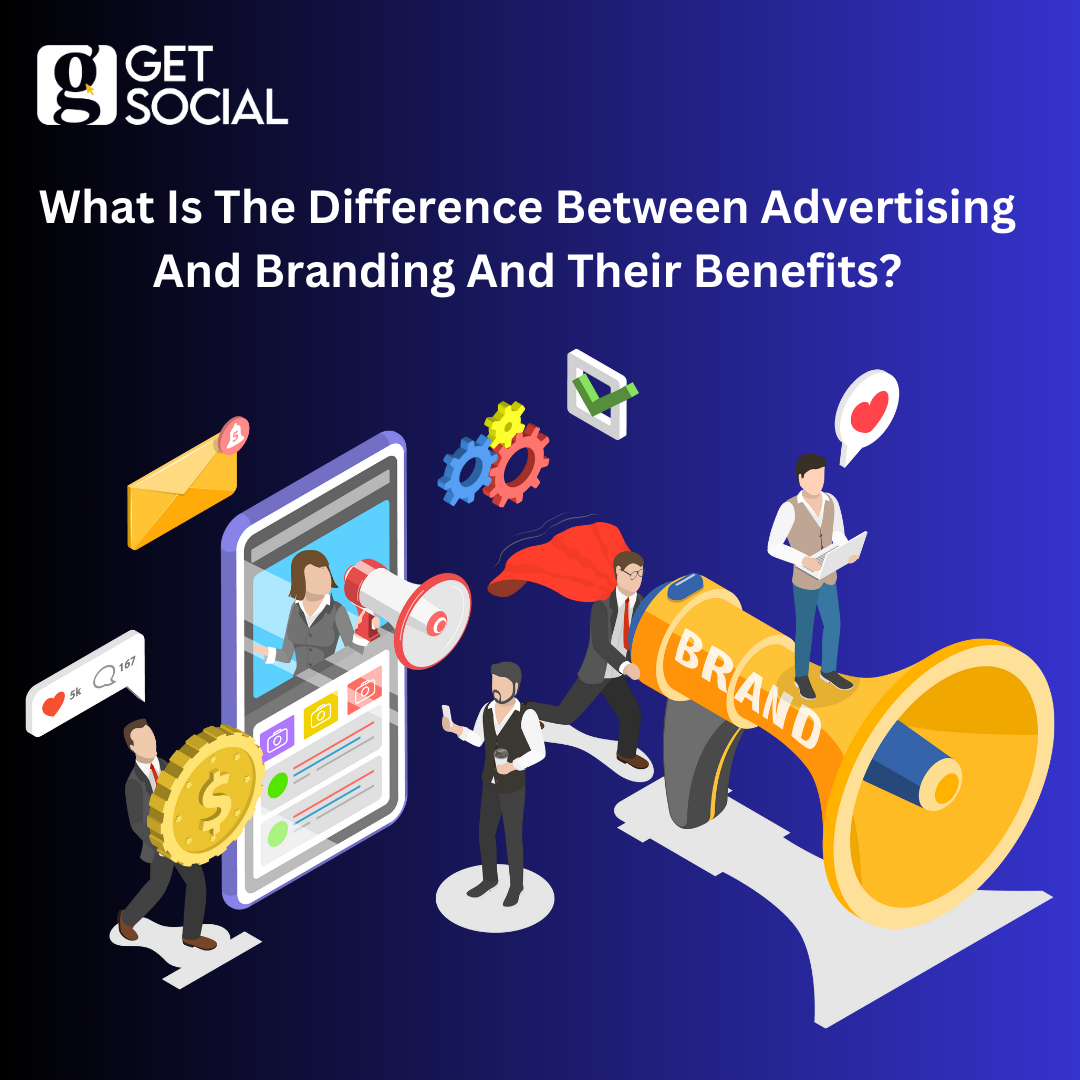While advertising and branding are distinct concepts, they are complementary components of a comprehensive marketing strategy.
Advertising serves as a tactical tool to promote products and drive short-term results, while branding provides a strategic framework for shaping the overall identity and perception of a brand in the long run.
Successful marketing campaigns often integrate both advertising and branding elements to create a powerful and cohesive brand presence in the minds of consumers.
Advertising
Advertising is a subset of marketing that involves the promotion of a product, service, or brand through paid channels. Its primary goal is to reach and persuade a target audience to take a specific action, such as purchasing a product, subscribing to a service, or engaging with a brand.
Advertising utilizes various mediums, including print, television, radio, online platforms, social media, and more.
Key Characteristics of Advertising
Paid Promotion
Advertising involves a financial investment. Advertisers pay for the placement of their messages in various media outlets, and this investment is essential to ensure a wider reach.
Targeted Messaging
Advertisements are crafted to appeal to a specific target audience. Advertisers conduct market research to understand consumer preferences and behaviors, tailoring their messages accordingly.
Short-Term Focus
Advertising often has short-term goals, aiming to generate immediate responses and drive sales within a specific timeframe. It is tactical and directly linked to sales objectives and if you are looking for an best advertising agency in pune then get social is the right place for you.
Measurable Results
The effectiveness of advertising campaigns can be measured through various metrics such as click-through rates, conversion rates, and return on investment (ROI). This allows advertisers to assess the success of their efforts.
Creativity and Innovation
Successful advertising campaigns often leverage creativity and innovation to capture the audience’s attention in a crowded media landscape. Memorable slogans, catchy jingles, and visually appealing content are common elements.
Benefits of Advertising
Increased Visibility and Exposure
Advertising enhances the visibility of a product, service, or brand by reaching a wide audience. It ensures that the target market becomes aware of the offerings, leading to increased exposure and potential customer acquisition.
Sales and Revenue Generation
Advertising serves as a direct driver of sales by promoting products or services. Well-crafted advertisements can create a sense of urgency, encourage immediate purchases, and contribute to revenue generation.
Brand Awareness and Recognition
Through consistent messaging and visual elements, advertising builds brand awareness. Over time, repeated exposure leads to brand recognition, making consumers more likely to consider and choose the advertised brand.
Targeted Marketing
Advertisers can tailor their messages to specific demographics, interests, and behaviors. Targeted advertising ensures that promotional efforts are more likely to resonate with the intended audience, increasing the effectiveness of campaigns.
Competitive Advantage
Advertising allows businesses to highlight their unique selling propositions and competitive advantages. It helps differentiate a brand from competitors, emphasizing what makes the product or service superior.
Branding
Branding is a broader and more strategic concept that encompasses the overall perception and identity of a company, product, or service. It involves shaping a distinctive and consistent image that resonates with the target audience, building long-term relationships and trust.
Branding is not limited to promotional activities but extends to every interaction a consumer has with a brand.
Key Characteristics of Branding
Identity and Values
Branding defines the identity and values of a company. It goes beyond the features of a product or service, focusing on the emotional and psychological connection with the audience.
Long-term Perspective
Unlike advertising’s short-term focus, branding is a long-term strategy. It aims to create enduring relationships with consumers and build brand loyalty over time.
Consistency Across Platforms
A strong brand maintains consistency in messaging, visual elements, and customer experience across various platforms and touchpoints. This consistency fosters brand recognition and trust.
Emotional Connection
Branding seeks to establish an emotional connection with the audience. It goes beyond functional benefits and resonates with the values and lifestyle of the target market.
Brand Equity
Brand equity is the value a brand adds to a product beyond its functional attributes. It is the result of positive associations, perceptions, and experiences that consumers have with a brand.
Benefits of Branding
Differentiation
Branding enables businesses to position themselves strategically in the market. Through the development of a unique value proposition, companies can communicate how their products or services stand out from competitors.
A well-crafted brand caters to the preferences and needs of a specific target audience. By understanding the desires and pain points of their ideal customers, businesses can tailor their brand to resonate with those individuals.
Brand Recognition
Consistency in visual elements, such as logos, colors, and typography, contributes to brand recognition. When consumers encounter these consistent elements across various platforms and touchpoints, they develop a visual association with the brand.
Brands that create memorable experiences or employ unique brand elements are more likely to be remembered by consumers. This memorability is essential in a competitive environment where attention spans are limited and if you are looking for an branding agency in pimple saudagar then get social is the right place for you.
Consumer Trust and Credibility
Brands that communicate a consistent message build trust with consumers. When a brand’s promises align with the actual customer experience, it enhances credibility.
Positive experiences and associations with a brand contribute to trust. Whether it’s the quality of products, exceptional customer service, or ethical business practices, these factors influence how consumers perceive the brand.
Customer Loyalty
Brands that go beyond functional benefits and establish an emotional connection with consumers often foster loyalty. Positive interactions at various touchpoints, including customer service, packaging, and online presence, contribute to a favorable brand experience. This positive experience is a key driver of customer loyalty.
Interconnections Between Advertising and Branding
While advertising and branding serve distinct purposes, they are interconnected and often work together to achieve overall marketing objectives.
Advertising as a Branding Tool: Advertisements contribute to building and reinforcing brand identity. Consistent messaging in advertising campaigns helps establish and strengthen the desired perception of the brand.
Brand Recall and Recognition: Effective advertising enhances brand recall and recognition. Memorable advertisements become associated with the brand, contributing to its overall image and identity.
Brand Messaging: Advertising is a crucial vehicle for conveying the brand’s core messages. The values, personality, and positioning communicated in advertising campaigns align with the broader branding strategy.
Promoting Brand Awareness: Advertising plays a significant role in creating awareness about a brand, especially in competitive markets. It introduces the brand to new audiences and reinforces its presence among existing customers.
Adaptation to Market Changes: Advertising allows brands to respond to changing market dynamics and consumer trends. Brands can use advertising campaigns to showcase innovation, respond to customer feedback, and stay relevant in the ever-evolving market.
Conclusion
The Difference between advertising and branding lies in their purpose, scope, and temporal orientation within the realm of marketing. Advertising, as a tactical and often short-term approach, is primarily focused on the promotion and sale of products or services.
It involves the strategic placement of messages through various channels to reach a broad audience, stimulate immediate responses, and drive sales.
The advantages of advertising include increased visibility, sales promotion, and measurable results, making it a crucial component for achieving short-term marketing objectives.







Add a Comment